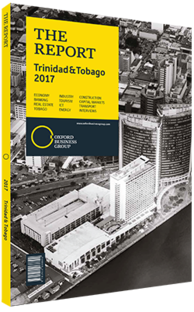Prime Minister Keith Rowley: Viewpoint

Viewpoint: Prime Minister Keith Rowley
The Caribbean is indeed a unique region. There are both differences and similarities among us as a group. Three of the regional economies – T&T, Guyana and Haiti – are commodity exporters, while the others are largely dependent on tourism and remittances. However, we are all relatively undiversified economies, and are highly vulnerable to developments in the US and the UK. Above all, we are convinced that our economic prospects are enhanced by close collaboration, involving intense dialogue and coordinated policies.
Currently, Caribbean economies are characterised by slow growth, weak fiscal and external positions, and extremely high public debt burdens – among the highest in the world. In 2015 the average debt-to-GDP ratio in the region was about 77%. Excluding commodity exporters, the average was close to 90%, and three countries had debt ratios in excess of 100%. In 2015 debt servicing costs ranged from 16% to 40% of government revenues in some countries, sharply reducing room for growth and inducing capital expenditure.
T&T has also found itself facing subdued growth and increasing fiscal imbalances. Following rapid economic expansion in 2004-09 – by about 8% per year – real GDP growth has been anaemic since 2011. The overriding reason has been the decline in oil and gas production in the face of maturing fields. Most recently, however, the dramatic slump in energy prices has affected activity in the sector directly, and has had major spillover effects on government expenditure and non-energy sectors.
With the consequent expansion in fiscal imbalances, the government now faces the twin tasks of fiscal consolidation and returning the economy to a faster growth path. In its five-year fiscal consolidation plan, the government has initiated a comprehensive reform of the non-energy tax regime, while reviewing the energy tax system to provide greater incentives for oil and gas exploration, increased secondary recovery and the promotion of renewable energy sources. In regards to expenditure, the government is focusing on measures to reduce corruption and wasteful spending, cut subsidies and transfers, and enhance the efficiency of spending on social programmes through better targeting. These measures will make space for greater growth-enhancing capital expenditure.
Our diversification strategy highlights the development of a number of sectors in which we believe we have a comparative advantage. These include tourism, merchant marine, arts and leisure, manufacturing, and some niche agricultural processing activities involving cocoa and coconuts. While we face some of the same challenges as many of our Caribbean colleagues, we are a little better off in two important respects: First, we have a lower and more manageable debt burden. Second, during the period of high oil and gas prices, we were able to build up sizeable buffers, including those in our Heritage and Stabilisation Fund.
The high debt burden carried by most Caribbean countries has been an impediment to their principal objective of achieving higher and more sustainable growth. Some countries have tried to ease their debt burdens through ad hoc restructuring arrangements, but invariably these have not accomplished enough. Moreover, few in the region qualify for concessional borrowing from the World Bank. Recently, three countries – Antigua and Barbuda, Jamaica, and St Kitts and Nevis – obtained significant debt service relief from IMF-supported programmes. While helpful, the relief did little to reduce the outstanding stock of debt – still at 90% of GDP for Antigua and Barbuda, 140% for Jamaica, and 65% for St Kitts and Nevis.
These persistently high debt ratios will continue to jeopardise growth performance. While transformation may first require fiscal stabilisation, the region, with its many vulnerabilities, runs the risk of being constantly in pursuit of fiscal adjustment, while more rapid and sustainable economic growth remains elusive. Breaking out of this cycle requires a comprehensive policy to address this significant debt overhang.
You have reached the limit of premium articles you can view for free.
Choose from the options below to purchase print or digital editions of our Reports. You can also purchase a website subscription giving you unlimited access to all of our Reports online for 12 months.
If you have already purchased this Report or have a website subscription, please login to continue.

